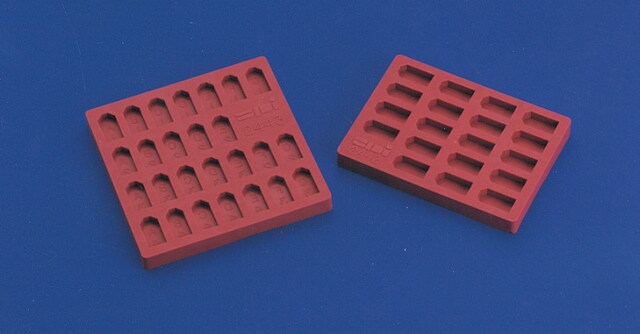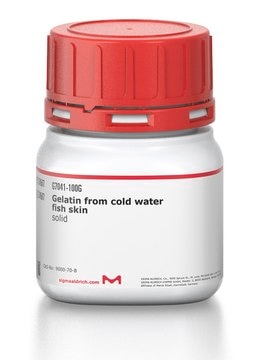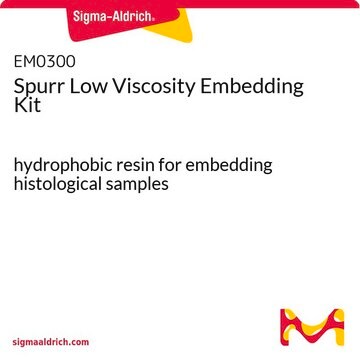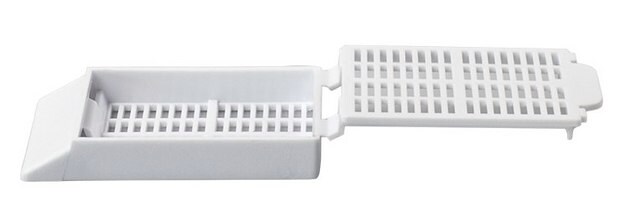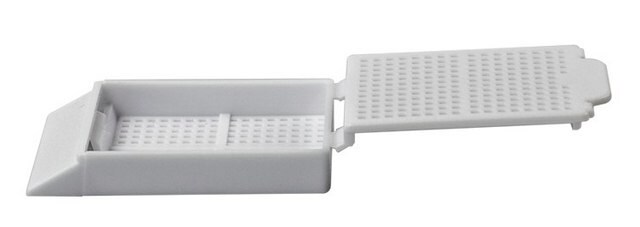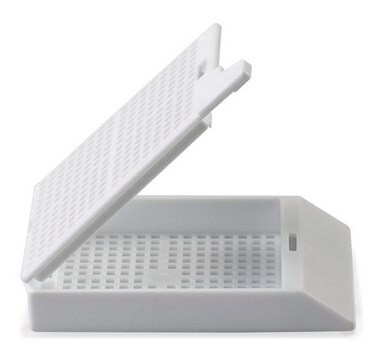E6032
Peel-A-Way™ embedding molds
Square S-22
Synonym(s):
disposable paraffin molds for embedding
Sign Into View Organizational & Contract Pricing
All Photos(1)
About This Item
UNSPSC Code:
41116124
NACRES:
NA.47
Recommended Products
Looking for similar products? Visit Product Comparison Guide
General description
Peel-A-Way® embedding molds are disposable paraffin molds that are designed to be peeled from solidified embedding blocks. The dimensions are 22mm x 22mm square x 20mm deep. They are used in histology and pathology laboratories for embedding tissue or for embedding cells generated from suspension cultures in paraffin wax or other embedding media. Peel-A-Way® embedding molds feature a unique design, which allows for easy orientation of tissue samples.
Application
Peel-A-Way® Embedding molds are used for multiple applications like:
- for histology and immunohistochemistry studies of Multicellular Tumor Spheroids (MTSs) embedded in 1% agarose gel.
- in sample preparation for confocal microscopy, image acquisition, and image analysis of brain tissues. PBS containing 6% low-melt agarose solution was poured to cover tissues into Peel-A-Way® Embedding molds.
- Peel-A-Way® embedding mold is suitable for sectioning of embryos and in preparation of acute tissue slices of mouse spinal cord.
Packaging
288 molds per case
Legal Information
Peel-A-Way is a registered trademark of Polysciences, Inc.
p3xFLAG is a trademark of Sigma-Aldrich Co. LLC
Choose from one of the most recent versions:
Certificates of Analysis (COA)
Lot/Batch Number
Sorry, we don't have COAs for this product available online at this time.
If you need assistance, please contact Customer Support.
Already Own This Product?
Find documentation for the products that you have recently purchased in the Document Library.
Customers Also Viewed
Convergence of topological domain boundaries, insulators, and polytene interbands revealed by high-resolution mapping of chromatin contacts in the early Drosophila melanogaster embryo
Stadler MR, et al.
eLife, 6-6 (2017)
An Acute Mouse Spinal Cord Slice Preparation for Studying Glial Activation ex vivo
Garre JM, et al.
Bio-protocol, 7(2) (2017)
Célia Fourrier et al.
Biochemical and biophysical research communications, 534, 107-113 (2020-12-15)
Measurement of autophagic flux in vivo is critical to understand how autophagy can be used to combat disease. Neurodegenerative diseases have a special relationship with autophagy, which makes measurement of autophagy in the brain a significant research priority. Currently, measurement of
Our team of scientists has experience in all areas of research including Life Science, Material Science, Chemical Synthesis, Chromatography, Analytical and many others.
Contact Technical Service